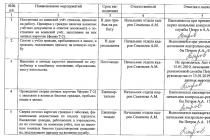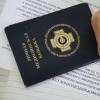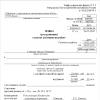Medicines and medical supplies. The "Encyclopedia of Medicines" reference book is available on various media (book, CD, flash card, mobile applications).
Radar information and services are intended for practitioners, pharmacy workers, medical representatives, managers of pharmaceutical companies, specialists in the field of drug supply and circulation of medicines and regional and municipal systems public procurement.
RLS is the developer of the architecture and concept of the information and linguistic platform for the digitalization of the drug supply.
Activities
- information support and maintenance of the site www.rlsnet.ru - a professional medical Internet resource with an audience of more than 9 million users per month;
- development of information systems based on the radar database for the Unified State Health Information System (EGISZ), the Unified Medical Information and Analytical System (EMIAS), the Unified Directory of Medicines (ESKLP), Monitoring the Movement of Medicines (MDLP);
- information support of electronic databases and drug reference books, medical devices and dietary supplements;
- harmonization of nomenclature reference books of medicinal products used in the region (municipality) and medical organizations;
- development and information support automated system monitoring the movement of medicines from the manufacturer to the end consumer using labeling (codification) and identification of medicines packages;
- creation and support of a drug traceability system;
- creation of automated workplaces of the system for monitoring the movement (distribution) of medicinal products for drug manufacturers, pharmacies and medical institutions;
- development, implementation and maintenance of a single language for machine-to-machine interaction in the field of drug supply - regulatory and reference information;
- monitoring of maximum permissible ex-works prices for vital and essential drugs, taking into account regional allowances;
- publication of reference books on medicines for doctors, pharmacists, pharmacists and other specialists in the field of drug provision;
- dissemination of information, book publications and electronic directories through the Program for Targeted Provision of Health Professionals with RLS Series Handbooks;
- monitoring of information demand for medicinal products (Vyshkovsky Index);
- holding regular international conferences under the patronage of the Ministry of Health of the Russian Federation “Modernization of information processes in healthcare”.
Services
The company offers services for integrated solutions to IT problems in the drug circulation market for pharmaceutical manufacturers, distributors, pharmacies, integrators, and regions.
- providing fragments of the radar database, necessary for solving specific problems, for embedding in the MIS (Radar database v. 1.0, Certificate No. 2009620557);
- automatic monitoring of prices for vital and essential drugs, taking into account regional surcharges (web-service Vital and Essential Drug Prices v. 1.0, Certificate No. 2014615968);
- automatic check for drug interactions when they are discharged by the attending physician (Drug Interaction (Android) v. 1.0, Certificate No. 2014615980; Database of drug interactions v. 1.0, Certificate No. 2014621047);
- automatic harmonization of drug nomenclature reference books used in the region (municipality) and medical organizations (Module for harmonizing the nomenclature base of the subject of the Traceability System and bringing it to the standard form v. 1.0, Certificate No. 2016615124. cloud solution subsystems for harmonization of nomenclature positions of medical goods (TMN) v. 1.0, Certificate No. 2014662851);
- automatic receipt of lists of pharmaceutically equivalent drugs for the selection of interchangeable drugs in systems for checking medical decisions (Database for determining the pharmaceutical equivalence of drugs v. 1.0, Certificate No. 2015620155);
- obtaining information about rejected batches of drugs for their automatic identification from among those used (Database of rejected batches of drugs v 1.0, Certificate No. 2016732042);
- data harmonization with ESKLP - a comprehensive solution for pharm. manufacturers, distributors, pharmacies, integrators and regions;
- interaction with - Medical Decision Support System for MIS. Necessary expert (informational-linguistic and methodological) assistance in building an interconnected triad:
- purchases;
- traceability (monitoring) of drugs;
- appointment and choice of drugs.
The differences are fundamental. The State Register of Medicines (GRLS) is a state database containing information from officially approved instructions for medical use medicines registered in the country. Radar - available online directory containing information about pharmacy products and medicines, including those currently unregistered in the territory of the Russian Federation, and is an exclusively commercial product.
In the process of preparing the work on the applications, several sources of information were considered until a conclusion was made: the text of the official instructions for the medicinal product attached to the registration dossier has absolute priority. During the procedure for the examination of the submitted materials, specialists from the Ministry of Health, or rather the Federal State Budgetary Institution "NCESMP", check the quality and reliability of the information, as well as make appropriate changes and additions. During the circulation of a drug on the Russian market, it often becomes necessary to make changes to the text of the instructions (for example, the emergence of new information about the efficacy and safety of the drug), which also undergo the appropriate examination.
Information from the instructions is available in the database of the Ministry of Health, which maintains the State Register of Medicinal Products (GRLS). This activity is regulated by the Law Russian Federation, as well as by order of the Ministry. It is on the texts of instructions from the State Register, which include all officially approved changes, that the work of KORDAG is based.
At the same time online available a large number of sources providing information on the use of drugs taken in the instructions. These are both international and Russian commercial companies, as well as those whose authorship is unknown. However, as our experience shows, they do not always update their databases on time, so the information provided on these resources is often out of date. There were cases of exclusion of registered drugs for unknown (commercial) reasons, inclusion of drugs not registered in the Russian Federation, as well as text editing and exclusion of entire sections of instructions. Of course, this could not but affect the credibility of these resources, in connection with which we decided to refuse to use them in our work.
Thus, in our work, we are guided by the data of the official instructions presented in State Register medicines, the texts of which are not indexed in search engines (Google, Yandex, etc.), because presented as scanned pages, i.e. in the form of graphic objects.
is a very useful application in terms of potential information. With a similar program in mind mobile application, you can quickly and most importantly correctly read the information about any drug. After all, everything in it is completely in Russian, which allows you to use it without problems. As you can see from the screenshots, the application has great amount a variety of drugs.
With the help of the search, you can find the name you are interested in and get all the detailed information on it. After all, it will often be useful for the user to read about what doctors prescribe or advise him in a pharmacy. It is possible to obtain information about active substances and pharmaceutical groups. All these handy options make the app stand out from the rest. After all, there has never been such a detailed database, so you can safely download it to your devices.


It is also possible to view drugs by manufacturer. Which is an exclusive feature of this application. After all, this is how you will be able to find out where the drug was produced and whether it is generally worth trusting certain manufacturers. This kind of information is very helpful. So if you are interested in this topic, the application will be very useful to everyone, because it is distributed free of charge.
Radar station(radar) or radar(English) radar from Radio Detection and Ranging- radio detection and ranging) - a system for detecting air, sea and ground objects, as well as for determining their range and geometric parameters. It uses a method based on the emission of radio waves and the registration of their reflections from objects. The English term-acronym appeared in the city, later in its spelling capital letters were replaced by lowercase.
Story
On January 3, 1934, an experiment was successfully carried out in the USSR to detect an aircraft using a radar method. An aircraft flying at an altitude of 150 meters was detected at a distance of 600 meters from the radar installation. The experiment was organized by representatives of the Leningrad Institute of Electrical Engineering and the Central Radio Laboratory. In 1934, Marshal Tukhachevsky wrote in a letter to the government of the USSR: "Experiments in detecting aircraft using an electromagnetic beam confirmed the correctness of the underlying principle." The first experimental installation "Rapid" was tested in the same year, in 1936 the Soviet centimeter radar station "Storm" spotted the aircraft from a distance of 10 kilometers. In the United States, the first contract between the military and industry was concluded in 1939. In 1946, American specialists - Raymond and Hucherton, former employee the US Embassy in Moscow, wrote: "Soviet scientists successfully developed the theory of radar several years before the radar was invented in England."
Radar classification
By purpose, radar stations can be classified as follows:
- detection radar;
- control and tracking radar;
- Panoramic radars;
- side-looking radar;
- Meteorological radars.
According to the scope of application, military and civilian radars are distinguished.
By the nature of the carrier:
- Ground radars
- Marine radars
- Airborne radar
By type of action
- Primary or passive
- Secondary or active
- Combined
By waveband:
- Meter
- centimeter
- Millimeter
The device and principle of operation of the Primary radar
Primary (passive) radar mainly serves to detect targets by illuminating them with an electromagnetic wave and then receiving reflections (echoes) of this wave from the target. Because the speed electromagnetic waves constant (the speed of light), it becomes possible to determine the distance to the target based on the measurement of the propagation time of the signal.
At the heart of the device radar station There are three components: transmitter, antenna and receiver.
Transmitting device is a source of high power electromagnetic signal. It can be a powerful pulse generator. For centimeter-range pulse radars, it is usually a magnetron or a pulse generator operating according to the scheme: a master oscillator is a powerful amplifier that most often uses a traveling wave lamp as a generator, and for a meter-range radar, a triode lamp is often used. Depending on the design, the transmitter either operates in a pulsed mode, generating repetitive short powerful electromagnetic pulses, or emits a continuous electromagnetic signal.
Antenna performs receiver signal focusing and beamforming, as well as receiving the signal reflected from the target and transmitting this signal to the receiver. Depending on the implementation, the reception of the reflected signal can be carried out either by the same antenna, or by another, which can sometimes be located at a considerable distance from the transmitting device. In the event that transmission and reception are combined in one antenna, these two actions are performed alternately, and so that a powerful signal leaking from the transmitting transmitter to the receiver does not blind the weak echo receiver, a special device is placed in front of the receiver that closes the receiver input at the moment the probing signal is emitted.
receiving device performs amplification and processing of the received signal. In the very simple case the resulting signal is fed to a ray tube (screen), which displays an image synchronized with the movement of the antenna.
Coherent radars
The coherent radar method is based on the selection and analysis of the phase difference between the sent and reflected signals, which occurs due to the Doppler effect, when the signal is reflected from a moving object. In this case, the transmitting device can operate both continuously and in a pulsed mode. Main advantage this method is that it "allows you to observe only moving objects, and this excludes interference from stationary objects located between the receiving equipment and the target or behind it."
Pulse radars
The principle of operation of the impulse radar

The principle of determining the distance to an object using pulsed radar
Modern tracking radars are built as impulse radars. Pulse radar only transmits for a very short time, a short pulse usually about a microsecond in duration, after which it listens for an echo as the pulse propagates.
Because the pulse travels away from the radar at a constant speed, the time elapsed from the moment the pulse was sent to the time the echo is received is a clear measure of the direct distance to the target. The next pulse can be sent only after some time, namely after the pulse comes back, it depends on the detection range of the radar (given by the transmitter power, antenna gain and receiver sensitivity). If the pulse had been sent earlier, then the echo of the previous pulse from a distant target could be confused with the echo of the second pulse from a close target.
The time interval between pulses is called pulse repetition interval, its reciprocal is an important parameter, which is called pulse repetition frequency(PPI) . Long range low frequency radars typically have a repetition interval of several hundred pulses per second (or Hertz [Hz]). The pulse repetition rate is one of hallmarks, by which it is possible remote detection radar models.
Elimination of passive interference
One of the main problems of pulse radars is getting rid of the signal reflected from stationary objects: the earth's surface, high hills, etc. If, for example, the aircraft is against the background of a high hill, the reflected signal from this hill will completely block the signal from the aircraft. For ground-based radars, this problem manifests itself when working with low-flying objects. For airborne pulse radars, it is expressed in the fact that the reflection from the earth's surface obscures all objects lying below the aircraft with the radar.
Interference elimination methods use, one way or another, the Doppler effect (the frequency of a wave reflected from an approaching object increases, from a departing object it decreases).
The simplest radar that can detect a target in interference is moving target radar(MPD) - pulsed radar that compares reflections from more than two or more pulse repetition intervals. Any target that appears to be moving relative to the radar produces a change in the signal parameter (stage in serial SDM), while the clutter remains unchanged. Interference is eliminated by subtracting reflections from two successive intervals. In practice, the elimination of interference can be carried out in special devices - through period compensators or algorithms in software.
FCRs operating at a constant pulse repetition rate have a fundamental weakness: they are blind to targets with specific circular velocities (which produce phase changes of exactly 360 degrees), and such targets are not displayed. The speed at which the target disappears for the radar depends on the operating frequency of the station and on the pulse repetition rate. Modern MDCs emit multiple pulses at different repetition rates - such that the invisible speeds at each pulse repetition rate are covered by other PRFs.
Another way to get rid of interference is implemented in pulse-doppler radar, which use significantly more complex processing than SDC radars.
An important property of pulse-Doppler radars is signal coherence. This means that the sent signals and reflections must have a certain phase dependence.
Pulse-Doppler radars are generally considered better than MDS radars in detecting low-flying targets in multiple ground clutter, this is the preferred technique used in modern fighter, for air interception / fire control, examples of this are AN / APG-63, 65, 66, 67 and 70 radars. In modern Doppler radar, most of the processing is done digitally by a separate processor using digital signal processors, usually using the high-performance Fast Fourier Transform algorithm to convert the digital reflection pattern data into something more manageable by other algorithms. Digital signal processors are very flexible and the algorithms used can usually be quickly replaced by others, replacing only the memory (ROM) chips, thus quickly counteracting enemy jamming techniques if necessary.
The device and principle of operation of the Secondary radar
Operating principle secondary radar somewhat different from the principle of Primary Radar. The device of the Secondary Radar Station is based on the components: transmitter, antenna, azimuth mark generators, receiver, signal processor, indicator and aircraft transponder with antenna.
Transmitter. Serves to emit interrogation pulses to the antenna at a frequency of 1030 MHz
Antenna. Serves for the emission and reception of the reflected signal. According to ICAO standards for secondary radar, the antenna transmits at a frequency of 1030 MHz, and receives at a frequency of 1090 MHz.
Azimuth Marker Generators. They are used to generate Azimuth Change Pulse or ACP and to generate Azimuth Reference Pulse or ARP. For one revolution of the radar antenna, 4096 small azimuth marks are generated (for old systems), or 16384 Small azimuth marks (for new systems), they are also called improved small azimuth marks (Improved Azimuth Change pulse or IACP), as well as one mark of the North. The north mark comes from the azimuth mark generator, with the antenna in such a position when it is directed to the North, and small azimuth marks serve to read the antenna turn angle.
Receiver. Used to receive pulses at a frequency of 1090 MHz
signal processor. Used to process received signals
Indicator Serves to indicate processed information
Aircraft transponder with antenna Serves to transmit a pulsed radio signal containing additional information back to the side of the radar upon receipt of a request radio signal.
Operating principle The principle of operation of the secondary radar is to use the energy of the aircraft transponder to determine the position of the Aircraft. The radar irradiates the surrounding area with interrogation pulses at a frequency of P1 and P3, as well as a P2 suppression pulse at a frequency of 1030 MHz. Aircraft equipped with transponders located in the coverage area of the interrogation beam upon receipt of interrogation pulses, if the condition P1, P3> P2 is in effect, respond to the requesting radar, with a series of coded pulses at a frequency of 1090 MHz, which contain Additional Information type Board number, Height and so on. The response of the aircraft transponder depends on the radar interrogation mode, and the interrogation mode is determined by the distance between the interrogation pulses P1 and P3, for example, in mode A of the interrogation pulses (mode A), the distance between the interrogation pulses of the station P1 and P3 is 8 microseconds, and when such a request is received, the transponder of the aircraft encodes its board number in the response pulses. In interrogation mode C (mode C), the distance between the interrogation pulses of the station is 21 microseconds, and upon receipt of such an interrogation, the transponder of the aircraft encodes its height in the response pulses. The radar can also send a mixed mode interrogation, such as Mode A, Mode C, Mode A, Mode C. The azimuth of the aircraft is determined by the angle of rotation of the antenna, which in turn is determined by calculating the Small Azimuth marks. The range is determined by the delay of the incoming response. If the Aircraft does not lie in the coverage area of the main beam, but lies in the coverage area of the side lobes, or is behind the antenna, then the Aircraft responder, upon receiving a request from the radar, will receive at its input the condition that P1 pulses ,P3 Advantages of the secondary radar, higher accuracy, additional information about the Aircraft (Side number, Altitude), as well as low radiation compared to Primary radars. Wikimedia Foundation. 2010 . radar- Russian Logistics Service http://www.rls.ru/ Radar radar communication Dictionaries: Dictionary of abbreviations and abbreviations of the army and special services. Comp. A. A. Shchelokov. M .: AST Publishing House LLC, Geleos Publishing House CJSC, 2003. 318 p., From ... Dictionary of abbreviations and abbreviations 06 Format: Electronic reference book, ISO Description: Pharmacological reference book "Register of Medicines of Russia® RLS®" includes information on the composition and form of release of drugs, The electronic version of the popular directory contains: Descriptions of drugs; The information of this program corresponds to the "Encyclopedia of Medicines" 21st edition, 2013.Other pages
Literature and footnotes
See what "RLS" is in other dictionaries:
oct
2013
Electronic Encyclopedia of Medicines RLS - 2013.21 (Register of Medicines of Russia)

G.L. Vyshkovsky, Academician of the Moscow Aviation Institute, Chief Editor of the Radar® Reference System
Release year: 2013
Genre: Textbooks, reference books, encyclopedias
Publisher: LLC "RLS-Patent"
indications for use, contraindications, side effects, use during pregnancy and lactation, method of use of drugs.
All information is obtained from official sources, verified and approved by manufacturers. Information is updated monthly.
- descriptions of active substances, including data from clinical trials;
- synonyms and analogues;
- information about the pharmacological action, indications for use, contraindications, side effects, etc.;
- nosological index (according to ICD-10) and pharmacological indicators (including ATC);
- photographs of preparations;
- fast and convenient search.
System requirements: This guide works on Windows® computers. Microsoft Windows® 2000 / XP / Vista / 7 / 8
Memory: ◦ 256 MB RAM or more.
160 MB of free hard disk space.
Monitor with a resolution of 1024x768 or higher.
Interface language : Russian
Tablet: Not required
Run with Daemon Tools, mount image...
04
july
2009
Electronic Encyclopedia of Medicines (Register of Medicines of Russia)

Release year: 2009
Description: Electronic encyclopedia of medicines. radar. Issue 17, 2009 The electronic version of the popular guide contains: - descriptions of preparations; - descriptions of active substances, including data from clinical trials; - synonyms and analogues; - information about the pharmacological action, indications for use, contraindications, side effects, etc.; - nosological index (according to ICD-10) and pharmacological indexes (including...
02
Feb
2009
Encyclopedia of Medicines

Release year: 2008
Author: Scientific and Editorial Council of the RLS Editor-in-Chief G.L. Vyshkovsky, acad. MAI, Doctor of Economics, prof.
Genre: Encyclopedia
Publisher: www.rlsnet.ru
Description: The electronic version of the popular reference book contains: - descriptions of preparations; - descriptions of active substances, including data from clinical trials; - synonyms and analogues; - information about the pharmacological action, indications for use, contraindications, side effects, etc.; - nosological index (according to ICD-10) and pharmacological indicators (including ATC); - photographs of preparations; - fast and convenient search. The information of this p...
31
May
2010
Electronic Encyclopedia (Ural Electronic Plant)

Format: Plain text, no errors
Release year: 2008
Genre: encyclopedia
Language: Only Russian
Number of pages: about 16.000
Description: One-volume legal dictionary contains definitions of more than 16,000 terms and expressions known to legal science and legislative practice. The book presents all the main branches of Russian, international and foreign law, as well as theoretical and applied legal disciplines (history of state and law, criminology, forensic science, forensic medicine). The articles of the Dictionary are arranged in alphabetical order and contain, where necessary, links to con...
28
sep
2007

Release year: 2005
Genre: Encyclopedia developer: MediaArt
Publisher: MediaArt
Publication type: license
Interface language: only Russian
Medication: Not required
Platform: Windows
Description: "Mushrooms" is a multimedia encyclopedia containing information on more than three hundred species of mushrooms. Articles about mushrooms are divided into three sections: "Information about mushrooms", "Edible and conditionally edible mushrooms", "Poisonous". In addition, there are two more sections on the disk, one of which contains recipes for delicious dishes, and the other section contains tests that will allow you to evaluate your knowledge. Rich t...
11
May
2007
Russian bath - electronic encyclopedia "All about the bath"

Description:
Format: HTML
Quality: Scanned pages
Description: No one doubts the benefits of a bath or sauna. A visit to the bath opens the pores and stimulates skin respiration, improves blood circulation, increases the function of the cardiovascular system, is a powerful means of activating the activity of capillaries and increasing metabolism. The heat of the bath destroys bacteria on the human body, makes the skin sterile, which contributes to the rapid healing of abrasions, wounds and various injuries; relieves fatigue, nervous tension, restores strength, restores vigor and improves mood.
Disc content: 1. ...
03
May
2011
RLS - Pharmacist 2011.14 (Directory of medicines)

Format: Electronic directory
Author: Editor-in-Chief G.L. Vyshkovsky, acad. MAI, Doctor of Economics, prof.
Release year: 2011
Genre: Textbooks, reference books, encyclopedias
Publisher: System of Reference Books "Register of Medicinal Products of Russia®"
Russian language
Description: Electronic version of the book "Pharmacist" 2011.14 - Directory of pharmacy products - Basic information about the drugs contained in the State Register of Medicines, the Federal Register of Biologically Active Food Supplements and other pharmacy products. - Description of more than 2000 active ingredients - Pharmacological...
26
Jan
2015
The latest encyclopedia. Computer and Internet 2013 (Vitaly Leontiev)

ISBN: 978-5-373-04986-3
Format: PDF, OCR without errors
Author: Vitaly Leontiev
Release year: 2012
Genre: Computer Literature
Publisher: OLMA Media Group
Series: The latest encyclopedia
Russian language
Number of pages: 960
Description: How to transcode a movie for a tablet or communicator? Where can I find an invitation to a private torrent tracker? How to choose an antivirus and make a beautiful smile in Photoshop? How is a kibibyte different from a kilobyte? When was the first email sent from China? You can find answers to these and many other questions in the next edition of The Newest Encyclopedia...
02
but I
2013
All codes of the Russian Federation as of September 1, 2013 (21 books) (Authors)

Format: PDF, Scanned pages
Author: Team of authors
Release year: 2013
Genre: Economics
Publisher: Various
Russian language
Number of books: 21 books
Description: Collection of all codes of the Russian Federation as of September 1, 2013 with amendments and additions. List of books Labor Code of the Russian Federation of December 30, 2001 N 197-FZ (Labor Code of the Russian Federation) (as amended and supplemented) Tax Code of the Russian Federation (TC RF) (as amended and supplemented) Civil Code of the Russian Federation (Civil Code of the Russian Federation) (part one , second, third and fourth) (with changes and additions) L...
14
Jan
2009
Electronic library "Energy"

Format: DOC, eBook (originally computer)
Release year: 2007
Author: NTI Service CJSC "Modern Information Technologies"
Genre: Electronic library of normative documents
Number of pages: 500
Description: The library has its own navigation and keyword search system. All documentation is in doc format. This library is divided into subsections, which include documentation related to the electric power industry. Under the spoiler is the entire list of documents included in the library (you can search using the browser).

Format: PDF - scan + OCR with errors, Djvu - scanned pages
Author: Shuli Allen
Released: 1967
Genre: Radio electronics
Publisher: Hydrometeorological Publishing House
Russian language
Number of pages: 64 Scanning and processing: malshin
Description: The book includes a review of the literature on the development and use of new electronic instruments for oceanographic research based on American data. The measurement technique and the principle of operation of instruments are described in the following sections: measurement of surface and internal waves, temperature, currents, sound speed in the ocean and intensity ...
26
Apr
2008

Type: audiobook
Genre: E-book
Author: Sabaneev L.P.
Performer: Voice technologies - the computer reads all the texts of the disc!
Publisher: IDDC
Audio: MP3 audio_bitrate: 40Kbps
Description: Systematized collection of works by today's largest specialist in Russian hunting and fishing. 10 volumes of text More than 1400 images in the gallery 6 video clips of hunting Sounds of wildlife will immerse you in the atmosphere of the forest.
Recommended: For hunters, anglers and lovers of hunting dogs: Comprehensive and varied systematized information














